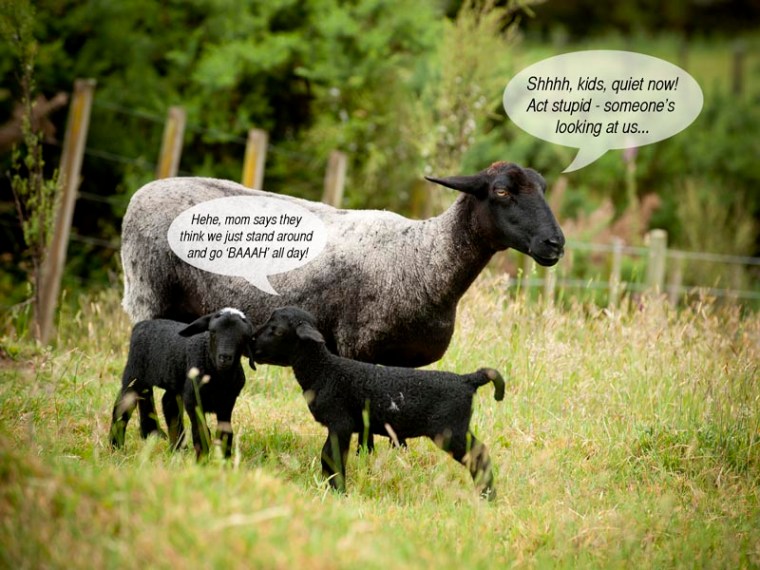It’s time for a bit of serious concentration again – here’s another fun paradox to get your head around…
Today is the birthday of Haskell Brooks Curry (12 Sep 1900 – 1 Sep 1982), an American mathematician and a pioneer of mathematical logic. He specialised in combinatorial logic, and some of his work found application in the development of modern computer programming languages.
While working on a strand of logic called ‘naïve logic’, he came up with a logical construct that became known as Curry’s paradox.

(© All Rights Reserved)
The paradox is based on the idea of a ‘conditional claim’, or (If A, then B). Consider the following conditional claim:
“If this sentence is true, then sheep can speak English.”
Even though the second part of the sentence is false (last time I checked), there’s nothing stopping us from analysing the truth of the sentence.
The quoted sentence is of the form (If A then B) where (A) refers to the sentence itself and (B) refers to the claim “sheep can speak English”. Within the context of Curry’s naïve logic, the way to prove a conditional sentence is to assume that the hypothesis (A) is true, and then to prove, based on that assumption, that the conclusion (B) is true.
So, lets start with the assumption (A) is true. Because (A) refers to the overall sentence, therefore assuming (A) is true implies that the statement (If A then B) is also true. So, because (A) is true, (B) must be true. Assuming the truth of (A) is therefore sufficient to guarantee that (B) is true, regardless of the actual truth of statement (B). Which of course results in a paradox if (B) is, in fact, false.
Phew….
We can even show Curry’s paradox occurring in formal symbolic logic. Assuming there is a formal sentence (X → Y), where X itself is equivalent to (X → Y), then a formal proof can be given for Y:
1. X → X
(rule of assumption, also called restatement of premise or of hypothesis)
2. X → (X → Y)
(substitute right side of 1, since X is equivalent to X → Y by assumption)
3. X → Y
(from 2 by contraction)
4. X
(substitute 3, since X = X → Y)
5. Y
(from 4 and 3 by rule of inference)
There you have it – convincing mathematical proof that sheep CAN speak English! 🙂
Phew, indeed.
I clicked ‘Like’ but only because I Like the fact that you understand this paradox.
Me wordy, not mathy …. now brain hurts…. 😉
Hehe, I guess the thing with these paradoxes is that just when you think you get it, it starts confusing you again…